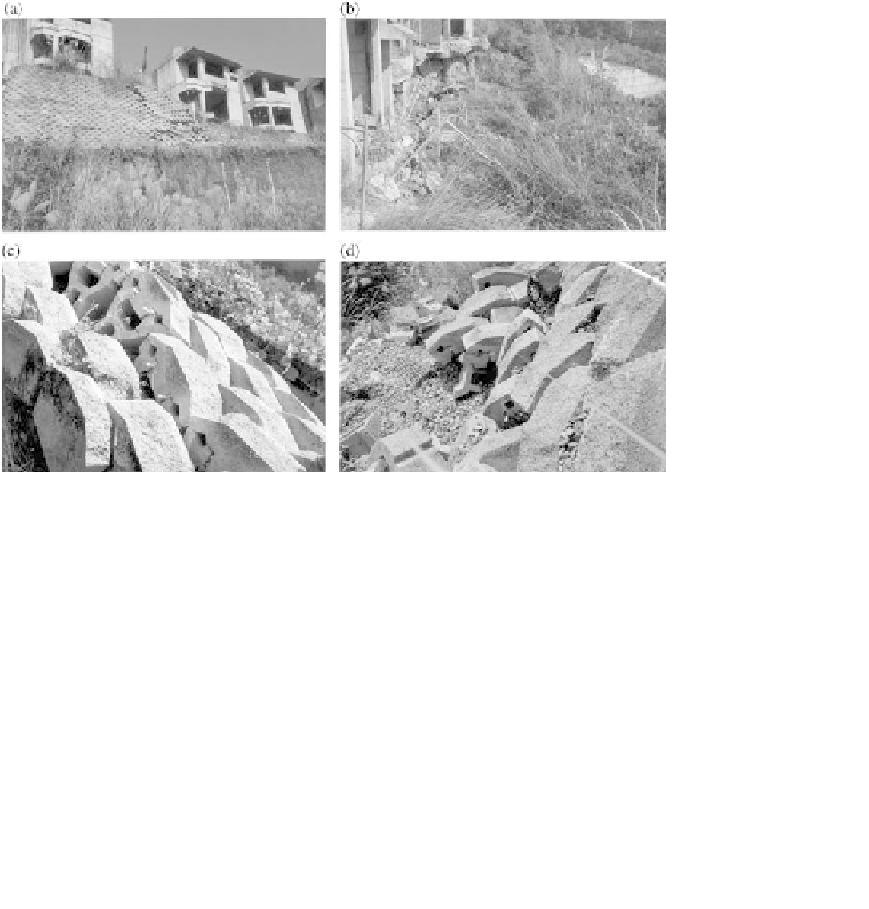Geoscience Reference
In-Depth Information
Figure 6
Ta Kung housing development site: (a) geosynthetic reinforced soil retaining
wall; (b) large settlement and failure surface behind GRS-RW; (c) deformation of modular
blocks along the top of the wall; (d) collapse of GRS-RW.
At one location close to the top of the wall, the blocks displaced outward,
resulting in the exposure of the connection pins (Fig. 6c). At the other location,
the wall collapsed with the blocks fallen apart (Fig. 6d). It can be seen from the
pictures that good-quality backfill material, gravel, was used. The reinforcement
was a polyester geogrid. Because of the problem of accessibility, information
related to the spacing of geogrid was not obtained directly, though it is expected
to be 3 or 4 blocks based on Taiwanese design practice. It has to be mentioned
that behind the wall, a very large settlement of over 2m was observed. The large
settlement damaged the foundation slab of the building (
Figs. 4a
and 6b). The
distance from the major crack to the wall was between 15 and 20m.
4.2 Ta Kung Roadway 129, Tai Chung City
Along the earthquake-affected areas, the stone walls, reinforced concrete walls,
and tie-back walls are widely used to retain the slopes. There were many failure
cases for the conventional retaining walls. Geosynthetic reinforced soil retaining
walls, with a modular block facing, were constructed at several locations along
Roadway 129. At one location,
failure of a 3.4-m-high modular block









Search WWH ::

Custom Search